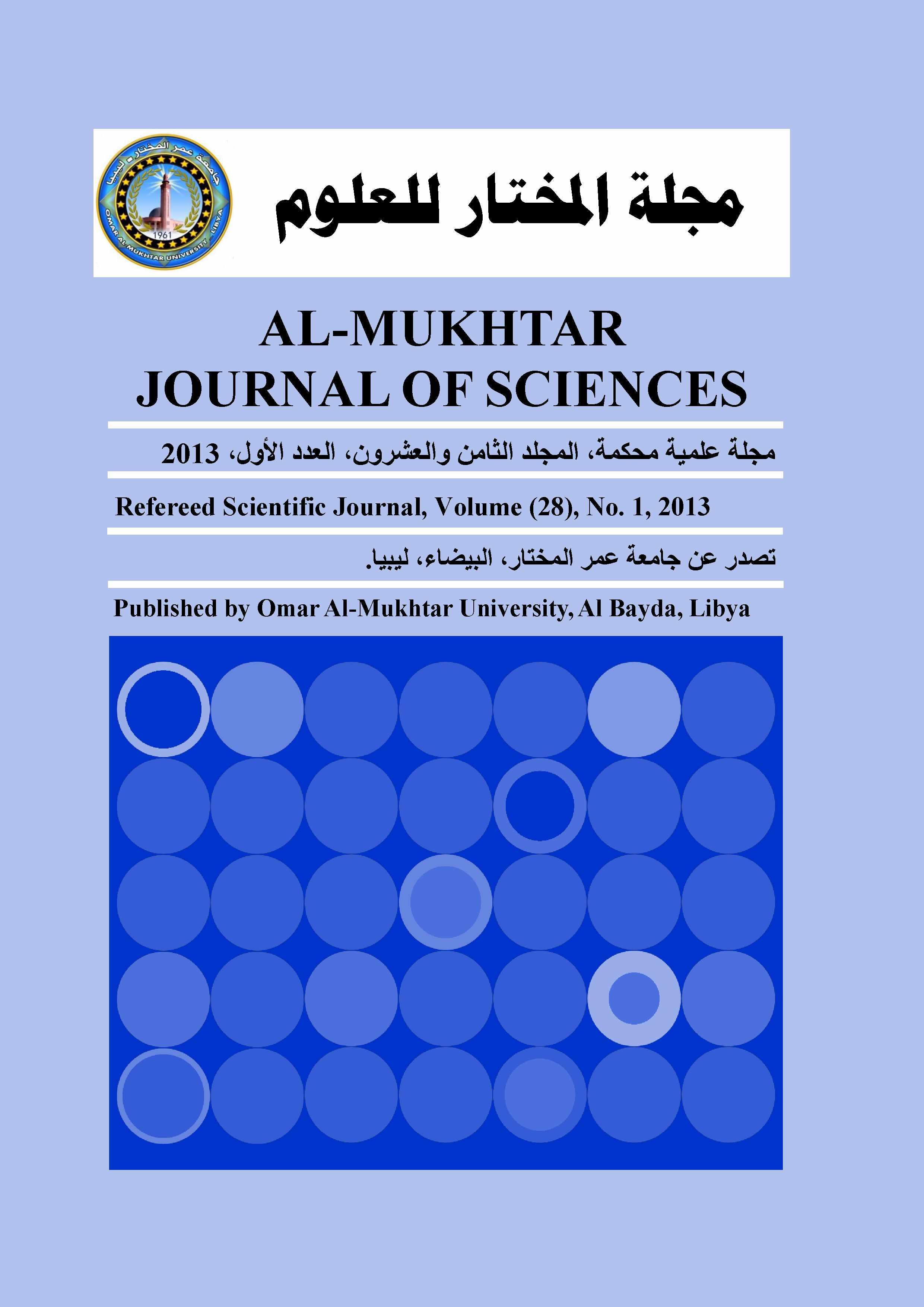Adsorption Kinetics of an Insecticide Diazinon onto Natural Clay
DOI:
https://doi.org/10.54172/mjsc.v28i1.140Keywords:
Natural clay, Diazinon, Adsorption Kinetics, Mass Transfer CoefficientAbstract
The external mass transfer model has been used to predict the rate-controlling step for the adsorption of an insecticide diazinon onto natural clay. The external mass transfer coefficients (Ks) have been determined and correlated with respect to three variables namely, agitation speed, initial concentration, and mass of clay. It has been found that Ks varies with the variables studied and may be correlated with (rpm)0.93, (C0)-0.96, and (m)-0.41. The external mass transfer coefficient as the dimensionless mass transfer term Sh/Sc1/3 has been correlated with the design variables. It has also been found that Sh/Sc1/3 varies linearly with the variables studied and may be correlated with system variables via the equation:
Downloads
References
Bird, R.B., Stewart, W.E. and Lightfoot, E.N. (1960) Transport phenomena. John Wiley & Sons, INC., 1st edition, 642-648.
Brunauer, S., Emmett, P.H. and Teller, E. (1932) Adsorption of gases in multi molecular layers. J Am Chem Soc, 6, 309-319.
El-Geundi, M.S. (1990) Adsorption equilibria of basic dyestuffs onto maize cob. Adsorption Sci. Technol., 7, 114-123.
El-Geundi, M.S. (1996) Adsorption kinetics for cationic dyestuffs on to natural clay. Adsorption Sci. Technol., 13, 295-307.
El-Geundi, M.S., Farrag, T.E. and Abd El-Ghany, H.M. (2005) Adsorption equilibrium of a herbicide pendimethalin onto natural clay. Adsorption Sci. Technol., 23, 437-453.
El-Geundi, M.S., Ismail, H.M. and Attyia, K.M.E. (1995) Activated clay as an adsorbent for cationic dyestuffs. Adsorption Sci. Technol., 12, 109-115.
Furusawa, T. and Smith, J.M. (1973a) Fluid-particle and intraparticle mass transport rates in slurries. Ind Eng Chem Fundam, 12, 197-203.
Furusawa, T., and Smith, J. M. (1973b) Diffusivities from dynamic adsorption data. AIChE Journal, 19, 401-403.
Furusawa, T. and Smith J.M. (1974) Intraparticle mass transport in slurries by dynamic adsorption Studies. AIChE J., 20, 88-93.
Lemic, J., Kovacevic, D., Tomasevic, M., Stanic, T., and Pfend, R. (2006) Removal of atrazine, lindane and diazinon from water by organo-zeolites, Water Research, 40, 1079-1085.
McKay, G., Allen, S.J., McConvey, I.F. and Otterburn, M.S. (1981) Transport process in the sorption of colored ions by peat particles. J. Colloid Interface Sci., 80, 323-339.
Murray, H.H. (2000) Traditional and new applications for kaolin, smectite, and palygorskite: a general overview. Applied Clay Science, 17, 207-221.
Shariff, M.R. (2012) Kinetic and thermodynamic study for adsorption – desorption of diazinon with copper in the presence of surfactant. Global Journal of Science Frontier Research Chemistry. 12, 16-31.
Srinivasan, R. (2011) Advances in application of natural clay and its composites in removal of biological, organic and inorganic contaminants from drinking water. Advances in Materials Science and Engineering, 2011, 1-17.
Wilke, C.R. and Chang, P. (1955) Correlation of diffusion coefficients in dilute solutions. AIChE J., 1, 264-270.
Zadaka, D., Nir, S., Radian, A. and Mishael, Y.G. (2009) Atrazine removal from water by polycation-clay composites: effect of dissolved organic matter and comparison to activated carbon, Water Research, 43, (3), 677-683.
Downloads
Published
How to Cite
License

This work is licensed under a Creative Commons Attribution-NonCommercial 4.0 International License.
Copyright of the articles Published by Almukhtar Journal of Science (MJSc) is retained by the author(s), who grant MJSc a license to publish the article. Authors also grant any third party the right to use the article freely as long as its integrity is maintained and its original authors and cite MJSc as original publisher. Also they accept the article remains published by MJSc website (except in occasion of a retraction of the article).










